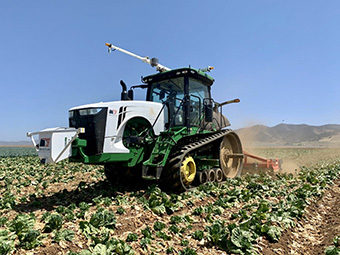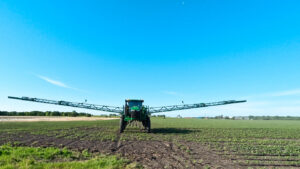Another week, another part of the agrifood supply chain that’s struggling from the impact of the Covid-19 pandemic.
Last month, the challenge facing the meat industry was top of the headlines, as large processing plants were forced to shut after numerous workers contracted the virus. This month, we’re seeing whole workforces in the produce industry come down with the virus, threatening the summer harvest of fruits and vegetables. Other parts of the world are experiencing similar labor shortages; the #PickforBritain campaign in the UK is a case in point. But labor shortages are nothing new for agriculture — the West Coast of the US has been struggling with this challenge for years; Covid-19 is merely exacerbating this existing problem. Is it sustainable and efficient to import labor from other countries like the US and the UK do?
The time for automation in the food and agriculture industry is now. But are the robots ready to be unleashed?
If venture capital funding is any indication of progress, the answer is probably no.

In 2019, our Farm Robotics & Automation category received the least amount of funding across agri-foodtech; granted there will be some robotics companies in other categories further downstream but most robotic innovation in agrifood has focused on the farm to-date.
As Marc Andreessen famously said, “hardware is hard” and robotics is the epitome of hardware. Then compound that with the tough conditions facing innovators in agriculture; dirt, weather, limited connectivity, to name a few. Even at the processing end, while it’s still repetitive work, often that’s with non-repetitive, delicate items like produce.
In recent months, we’ve noticed a step change; the technology stack is advancing as other industries accelerate their adoption of artificial intelligence tools, and component costs are declining.
At AgFunder, we’ve been doing a deep dive here and have invested in both indoor and outdoor robotics companies. But clearly there’s a need for more investment and innovation to scale this segment to be a meaningful tool in agrifood.
To discuss the inherent challenges of the space, and how to move it forward in a post-Covid-19 world, we hosted a webinar with the founders of two robotics startups that we think are leading the way — Josh Lessing from RootAI (disclosure: an AgFunder portfolio company), and Igino Cafiero Bear Flag Robotics.
Watch the recording below to learn how RootAI is automating harvest in greenhouses starting with crops like strawberries and how Bear Flag Robotics is retrofitting existing machinery with autonomous tillage equipment. During our conversation we cover:
– why robotics have taken a while to gather pace in food and agriculture
– what it takes to scale a robotics startup and the core challenges facing startups
– what the future looks like for these startups: will they integrate with others or become platforms in their own rights, able to perform multiple tasks across multiple crops?
– AgFunder’s thesis and approach to investing in robotics – we recently conducted a deep-dive into the category
– the challenges of investing in the space as a venture capital firm — hardware is hard etc.
– how applicable the technology is for different sized farms in different parts of the globe
– and much more, with loads of questions from participants.




